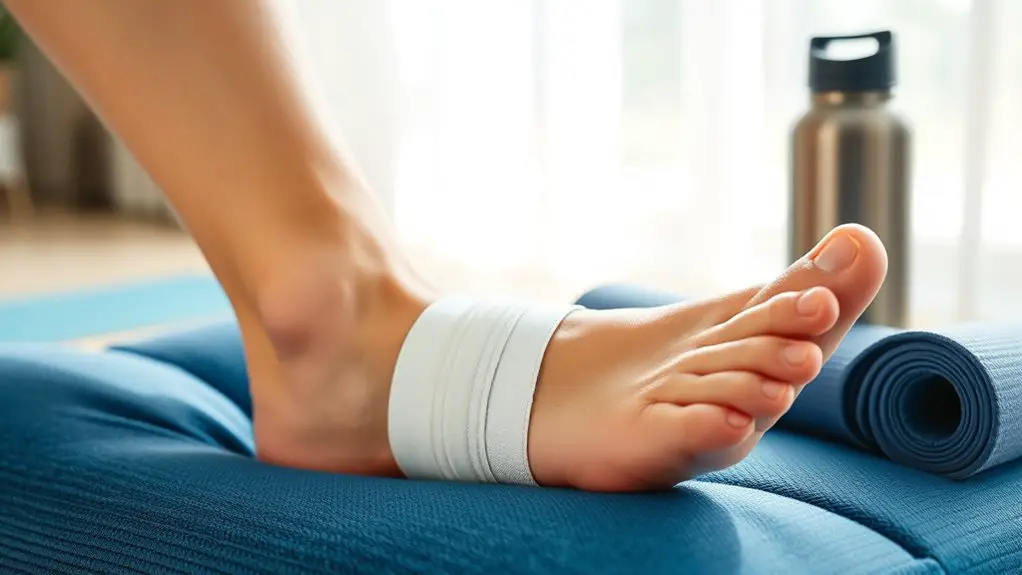To use deep tissue massage for muscle repair, start with a skilled therapist who knows your pain areas. They'll apply targeted pressure to release tight muscles and improve circulation. Use deep breathing to enhance relaxation during the session. Afterward, drink water and expect some soreness as your muscles recover. Avoid intense activities for a day, and consider warm baths to soothe your muscles. If you're curious about more techniques and tips, there's plenty more to discover.
Understanding Deep Tissue Massage and Its Benefits
When you're looking for relief from chronic pain or muscle tension, understanding deep tissue massage and its benefits can be a game changer. This therapeutic approach targets the deeper layers of muscle and connective tissue, helping to break up adhesions and improve circulation. By applying firm pressure, it can release tightness and promote relaxation, giving you a sense of freedom from discomfort. Many people find that deep tissue massage not only alleviates pain but also enhances flexibility and range of motion. It's particularly effective for those with athletic injuries or ongoing stress-related tension. Embracing this technique can lead to a more balanced body and a renewed sense of well-being, empowering you to live life more fully and freely.
Techniques for Effective Deep Tissue Massage
To effectively harness the benefits of deep tissue massage, mastering specific techniques is key. Start with slow, firm pressure to warm up the muscles. Use your thumbs, fingers, or elbows to target knots and tight areas, applying deep pressure in small circular motions. Remember to communicate; ask for feedback on pressure and adjust as needed. Incorporate long, sweeping strokes to promote relaxation between deep work. Focus on one muscle group at a time, ensuring you spend adequate time on each area. Breathing is essential—encourage your partner to breathe deeply to release tension. Finally, don't rush; take your time to allow the muscles to respond. With practice, you'll create an experience that liberates the body and mind, fostering true relaxation.
Preparing for a Deep Tissue Massage Session
How can you assure a successful deep tissue massage session? Start by finding a skilled therapist who understands your specific needs. Don't hesitate to communicate any pain or tension areas; they'll appreciate your honesty. Arrive a bit early to relax and set your intentions for the session—this isn't just a routine; it's about liberating your muscles. Wear comfortable clothing that allows easy access to the areas needing attention. Hydrate well before your appointment; it helps in muscle recovery and assures better results. Finally, clear your mind of distractions. Embrace the experience and allow yourself the freedom to unwind. By preparing in these ways, you'll create an ideal environment for deep tissue massage to work its magic.
Post-Massage Care and Recovery
After your deep tissue massage, taking care of yourself is just as important as the preparation beforehand. Start by drinking plenty of water to help flush out toxins released during the massage. You might feel a bit sore, and that's normal—give your muscles time to recover. Resting is key; avoid rigorous activities for at least 24 hours. Gentle stretching can be beneficial, but listen to your body. Try to soak in a warm bath with Epsom salts to soothe your muscles further. Consider using a foam roller or gentle massage at home to maintain the benefits. Finally, allow yourself to relax and enjoy the freedom of movement as your body heals—embracing self-care is essential for long-term wellness.
When to Seek Professional Help for Muscle Repair
While most muscle soreness will fade with rest and self-care, there are times when it is crucial to seek professional help for muscle repair. If you're experiencing severe pain that doesn't improve after a few days, or if you notice swelling, bruising, or muscle weakness, don't hesitate to reach out to a professional. These could be signs of a more serious injury requiring expert attention. Additionally, if your mobility is limited or you can't perform daily activities without discomfort, it's time to consult a therapist or physician. Remember, prioritizing your well-being is a form of self-care. Seeking help isn't a sign of weakness; it's a step toward reclaiming your freedom and getting back to what you love.
Frequently Asked Questions
Can Deep Tissue Massage Help With Chronic Pain Relief?
Yes, deep tissue massage can help relieve chronic pain. It targets tight muscles and fascia, easing tension and improving circulation. You'll likely feel more relaxed, allowing your body to heal and regain mobility more freely.
How Often Should I Get Deep Tissue Massages?
Did you know that 70% of people report feeling less stressed after regular massages? If you're seeking freedom from tension, aim for deep tissue massages every 2-4 weeks, adjusting based on your body's needs and stress levels.
Is Deep Tissue Massage Safe for Everyone?
Deep tissue massage isn't safe for everyone. You should consult a healthcare professional before trying it, especially if you have medical conditions or injuries. Listen to your body, and don't hesitate to ask questions.
What Should I Wear During a Deep Tissue Massage?
You don't need to wear the fanciest outfit, but comfort's key. Opt for something loose and breathable, like athletic wear. This'll help you feel free and relaxed, maximizing your massage experience and letting tension melt away.
Can I Perform Deep Tissue Massage on Myself?
You can definitely perform deep tissue massage on yourself! Just find those tight spots, use your hands or tools, and apply pressure. It might take some practice, but you'll feel the benefits in no time!




